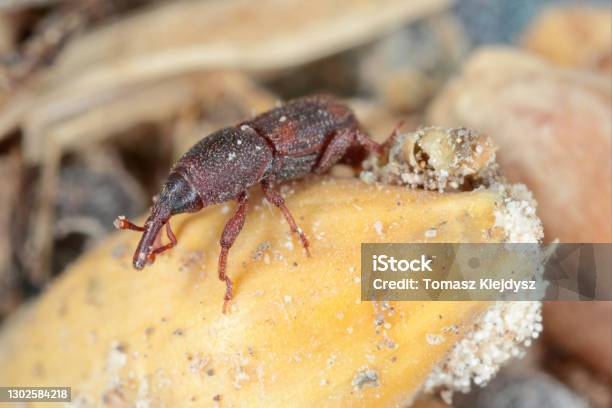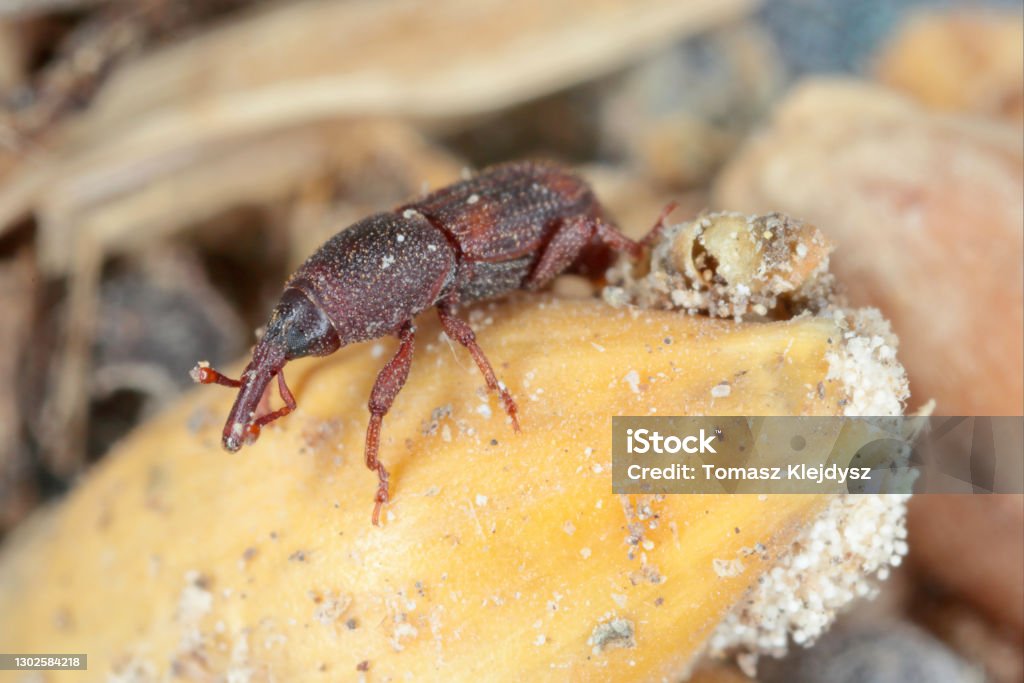Description
The rice weevil (Sitophilus oryzae) is a stored product pest which attacks seeds of several crops, including wheat, rice, and maize. Adult rice weevils are able to fly, and can live for up to two years. Females lay 2-6 eggs per day and up to 300 over their lifetime. The female uses strong mandibles to chew a hole into a grain kernel after which she deposits a single egg within the hole, sealing it with secretions from her ovipositor. The larva develops within the grain, hollowing it out while feeding. It then pupates within the grain kernel and emerges 2–4 days after eclosion. An adult emerges from inside a grain of rice. Male S. oryzae produce an aggregation pheromone called sitophilure ((4S,5R)-5-Hydroxy-4-methylheptan-3-one) to which males and females are drawn. A synthetic version is available which attracts rice weevils, maize weevils and grain weevils. Females produce a pheromone which attracts only males. Its gammaproteobacterial symbiont Candidatus Sodalis pierantonius str. SOPE is able to supply rice weevil with essential vitamins like pantothenic acid, riboflavin, and biotin. During larvae development, bacteria rely on up-regulation of type three secretion system genes and genes for flagellum so they can infect insect stem cells.

